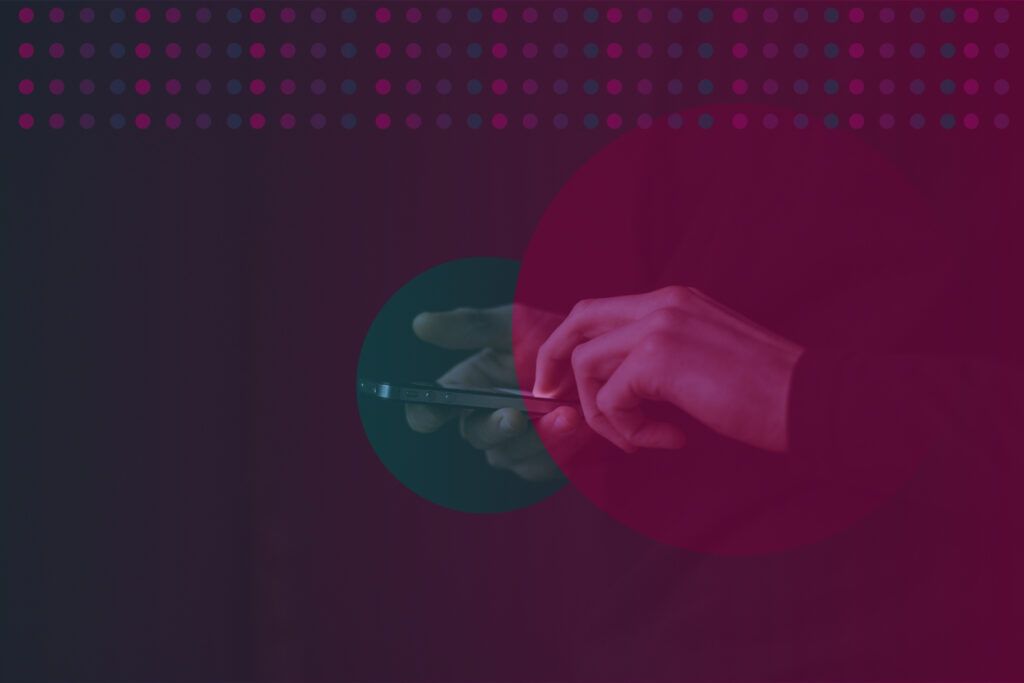The term “influencer,” brings forth the image of an audience captivated by clothing hauls, makeup swatches and restaurant reviews. And in the endless scroll of from one account to the next, we’ve seen the recommendations from these influencers…actually make a difference. Viral products go out of stock in sales spikes, companies are catapulted into mainstream brand awareness, and sometimes even media coverage rolls in.
Now, those of us in B2B are unlikely to reach the same audience that’s going wild for cube croissants, or mini Trader Joe’s bags, but the same concept applies to our influencer marketing programs. Someone whom your customer base likes and trusts is going to get that same level of captivation and potentially make a similar difference if they were to endorse your product or brand.
This is especially true for high-trust industries. Take cybersecurity, for example. In the advancing threat landscape, where they’re fighting alert fatigue and tool redundancy, IT and security leaders are looking for technology that actually works. That means they want to hear from real industry experts and people actually using cybersecurity products, as opposed to hearing from brands themselves.
Getting an endorsement isn’t as straightforward as it might seem, and B2B companies need to be strategic when it comes to influencer marketing. Here’s what you need to know.
What Sets a B2B Influencer Program Apart from B2C
If you’re not using influencers, you’re missing out: 75 percent of B2B marketers are already utilizing influencers.
For those on the fence, it may be helpful to clear up a misconception. Many B2C influencers found their platforms through relatability, humor, style, or some other intangible attribute, as opposed to formal credentials. This understanding of influencers is what sometimes can make influencer marketing feel more like “fluff.” But in technical industries, it’s a different ballgame.
For B2B influencers, it’s much more experienced-based, and they need to be well-established within the community. They can be subject matter experts, bloggers, podcasters, analysts and more. These are people who have boots-on-the-ground stories or expertise proving their credentials.
This is especially transparent in a targeted strategy with micro-influencers. They’re able to reach a more niche and closely connected audience that trusts their specific credentials. Think about those in highly regulated industries, like finance, accounting, or legal. Though this audience may be smaller, they’re likely to be more engaged and think highly of an endorsement from that influencer.
Building a Successful B2B Influencer Program: A Step-by-Step Guide
Want to build, and scale, your B2B influencer marketing strategy? Here’s how.
- Understand Your Goals. The first step to influencer marketing is understanding your goals. Is it increasing brand awareness? Promoting a specific campaign? This core objective will guide the rest of your decision-making process.
- Define Your Audience. Consider who you want these efforts to reach. The right influencer will be the one who is speaking to and truly connecting with that audience. For targeted messaging, it can be helpful to map out your personas.
- Research Potential Influencers. Take a look through social media platforms and see who is active in the community you’re looking to reach. Understand how they’re reaching their audiences, how they’re being received
- Vet Your Options. One of the most useful tools for this vetting process is with an influencer scorecard. This looks at different aspects of their platform – what is their following, who’s in the audience, are they a match for your desired topics and keywords, what other brands have they previously worked with, etc. You can use this as a high-level view to make an easy decision on whether or not they’re a good potential partner.
- Engage With Your Influencer. Reach out and set up your terms for the partnership.
Authenticity First: How to Engage B2B Influencers the Right Way
When reaching out to B2B influencers, consider that they’re not interested in shilling your products. Their platforms are trust-based, and they want to be authentic about what they’re saying to their audiences. Influencer marketing is not sales, so when you start to engage, don’t send them something overly promotional.
PAN approaches influencer outreach a lot like a media pitch. Keep it short and to the point, show where your interests overlap and tell them why your brand or material would matter to their audience. Focusing on relevancy and education is much more appealing to an influencer, and proves better value in the long run.
Once you’ve got your influencer on board, it’s a collaborative process to figuring out how you work together. Each influencer is different in what they provide and the elements that make up a statement of work. Social amplification, for example, is usually a baseline offering, but others can include:
- A guest blog, written on your site or theirs.
- A LinkedIn Live together.
- A podcast episode – either on their show or yours.
- Participation in company research via a quote or foreword.
- Amplifying reports or adding value to other content.
- Participating in your events or industry events on your behalf.
Expect these to be paid opportunities. Where one-off proposals for these collaborations were once the norm, more lately we’ve seen influencers showing interest in long-term contracts. These allow them to build a more genuine connection to the brand and prove a real relationship alongside their endorsements.
In the nitty gritty, this is also the time to figure out any compliance and legal considerations. Not only do you need to cross your t’s and dot your i’s within a written agreement with your influencer, but you also need to make sure your planned collaborations meet disclosure and transparency terms, platform policies, and any industry-specific regulations.
ROI You Can Prove: Measuring Success in B2B Influencer Campaigns
Now you’ve got your program in place – how do you prove ROI? It’s not just about setting goals, but ensuring the goalposts are in the right place to reach them. Influencer marketing is as strategic and measurable as any other part of your marketing program, so plan to show value with specific, data-driven metrics.
For insight into how the messaging from your influencer campaign are landing, here are some of the metrics that matter:
- Social Engagement – Have you seen a marked increase in meaningful interactions via social media, from likes and shares to comments and tags?
- Website Traffic – Has there been an upswing in website traffic around key influencer engagements?
- Brand Lift – Are perceptions, awareness or favorability for your brand seeing a change?
- Lead Attribution – How many leads are coming from influencer-sponsored posts?
Having these specific modes of measurement on hand is what’s going to support your conversations with leadership on what’s working and what’s not. These are metrics that directly connect to business outcomes, and ultimately can help you to secure budget for additional valuable influencer connections (or other marketing initiatives). You’ll be in good company – 46 percent of marketers expect a rise in budgets allocated to influencer marketing.
Related Read – Top 12 Integrated Marketing & PR Metrics
New Trends in B2B Influencer Marketing: AI, Non-Traditional Media, and Social Platform Exoduses
As for the latest on the influencer marketing landscape, there are a few emerging trends to understand and capitalize on, where it makes sense.
First, we’d be remiss not to consider how AI-powered tools can provide a boost to these programs. They can support influencer discovery, ideation on collaborations, and the development of crucial pieces of your campaigns. Let them be another part of your extended team on your influencer journey.
But also take time to consider how different the communication landscape is looking for these influencers. In the past few years we’ve seen cross-platform shifts, like mass exodus from X (formerly Twitter), and an influx in LinkedIn creators. Though it varies from one industry to the next, marketers recently reported Facebook as providing the highest ROI of any social media platform.
Each influencer has a different way of reaching their audiences, but having a keen understanding of the broader platform changes (see: drama), may change some of the partnerships you decide to make.
Some influencers are communicating off social media entirely. Non-traditional media, like substacks, newsletters, podcasts and LinkedIn Lives have grown in popularity, and really add to the authenticity of B2B influencers. Recognize that these are potential options within influencer collaborations, and may grow in value as we see further changes to social media.
Related Read – Do This, Not That: A Practical Approach for How Marketers Can Use ChatGPT (AI on the Move)
Make It Count: Why Strategy Is Everything in Influencer Marketing
Putting in the work on the front end – setting up goals, researching your influencers, and figuring out the SOW that works for both of you – is what will provide the most value on the backend.
If there’s one thing we can encourage you to do, it’s to really lean into your metrics. Getting an influencer program up and running is not without effort – but it’s worth the time to cultivate these relationships. Let the numbers do the talking when it comes time to prove ROI.
Influencer marketing feels a lot like a new strategy, and for many, it is. But it’s important to success. Today it’s an essential part of a full-funnel marketing strategy, from brand to demand.
Want to talk about the influencers that are right for your brand? Start engaging on a gameplan with PAN.



